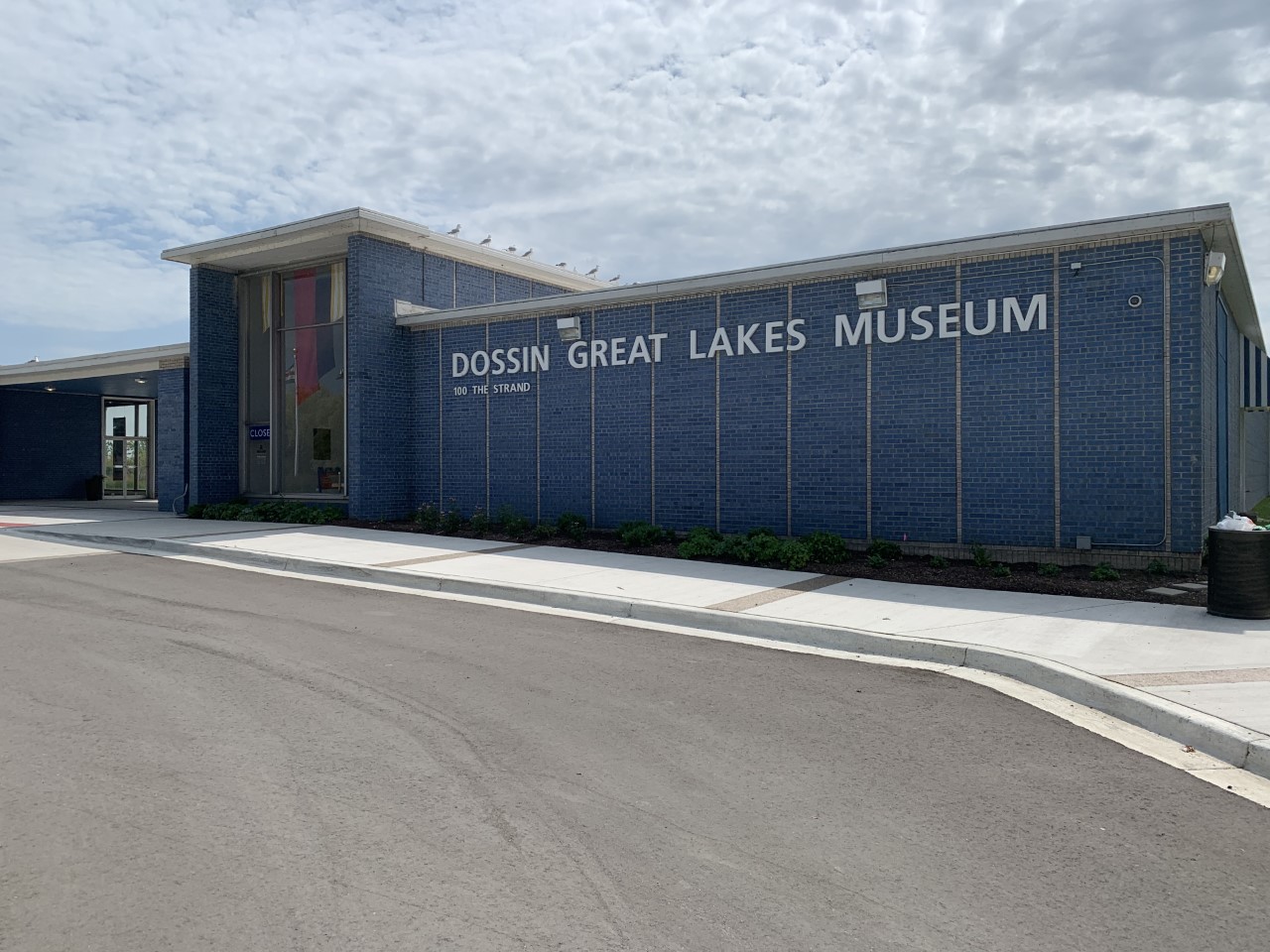Improvements at Belle Isle Museum Make Better Use of Detroit River
The Dossin Great Lakes Museum offers easier access for cars, and kayaks.

A small cove next to the Dossin Great Lakes Museum on Belle Isle is a popular launching spot for kayakers on the Detroit River. The Detroit Historical Society, which operates the museum, recently finished stabilizing the stream bank near the cove to make it easier for them to put their kayaks in the water.
It’s one of several exterior renovations at the museum that have just been completed.
“We wanted to make the site more accessible and more user friendly.” — Rebecca Salminen Witt, Chief Development Officer for the Detroit Historical Society.
The museum’s entrance is on The Strand, and that’s the side most people see when they visit. The exterior renovations are meant to draw attention to the part that faces the Detroit River.
Click on the player to hear Pat Batcheller’s conversation with Rebecca Salminen Witt about what’s new at the Dossin Great Lakes Museum

“This is the first time in 60-year history of the museum that we made an intentional choice to use the beautiful riverfront side,” says Rebecca Salminen Witt, the Detroit Historical Society’s Chief Development and Communications Officer.
“We added a patio outside of our main gathering area inside,” she says. “It’s accessible from the museum itself and utilizes a space that was never accessible to the public.”
The society has also made it easier to reach the museum by making a new cut in the curb leading into the parking lot.
“If you came down the wrong way, you ended up having to loop the entire island,” Salminen Witt says. “We’ve also improved the entrance so it’s much cleaner with easy turnaround for buses.”
The renovation also gave museum officials a chance to display artifacts that are meant to be outside. Salminen Witt says the most prominent one is a bow anchor from the ore freighter Edmund Fitzgerald, which sank during a fierce storm on Lake Superior in 1975.

“We wanted a better place to show that off and add some historical interpretation, and with the improvements to the site, now we’ve got room for that,” she says.
The historical society spent more than $2 million on the exterior renovations, and Salminen Witt says that money was raised and budgeted before the COVID-19 pandemic began.
“These were mostly individuals who stepped up and said the maritime history of Detroit was an important one to tell,” she says.
More improvements are planned for the future, but Salminen Witt says the society will wait for a more favorable fundraising environment to seek donations.
“We’d like to do a walking path that would connect the museum grounds to the Michigan Department of Natural Resources fishing pavilion just to the west,” she says.
The museum was closed for several months because of the pandemic, but re-opened in July with new health and safety protocols for visitors, staff, and volunteers.
“We’re seeing visitors come back at a rate between 30 to 50 percent, which is about what we expected.”
Trusted, accurate, up-to-date
WDET is here to keep you informed on essential information, news and resources related to COVID-19.
This is a stressful, insecure time for many. So it’s more important than ever for you, our listeners and readers, who are able to donate to keep supporting WDET’s mission. Please make a gift today.
